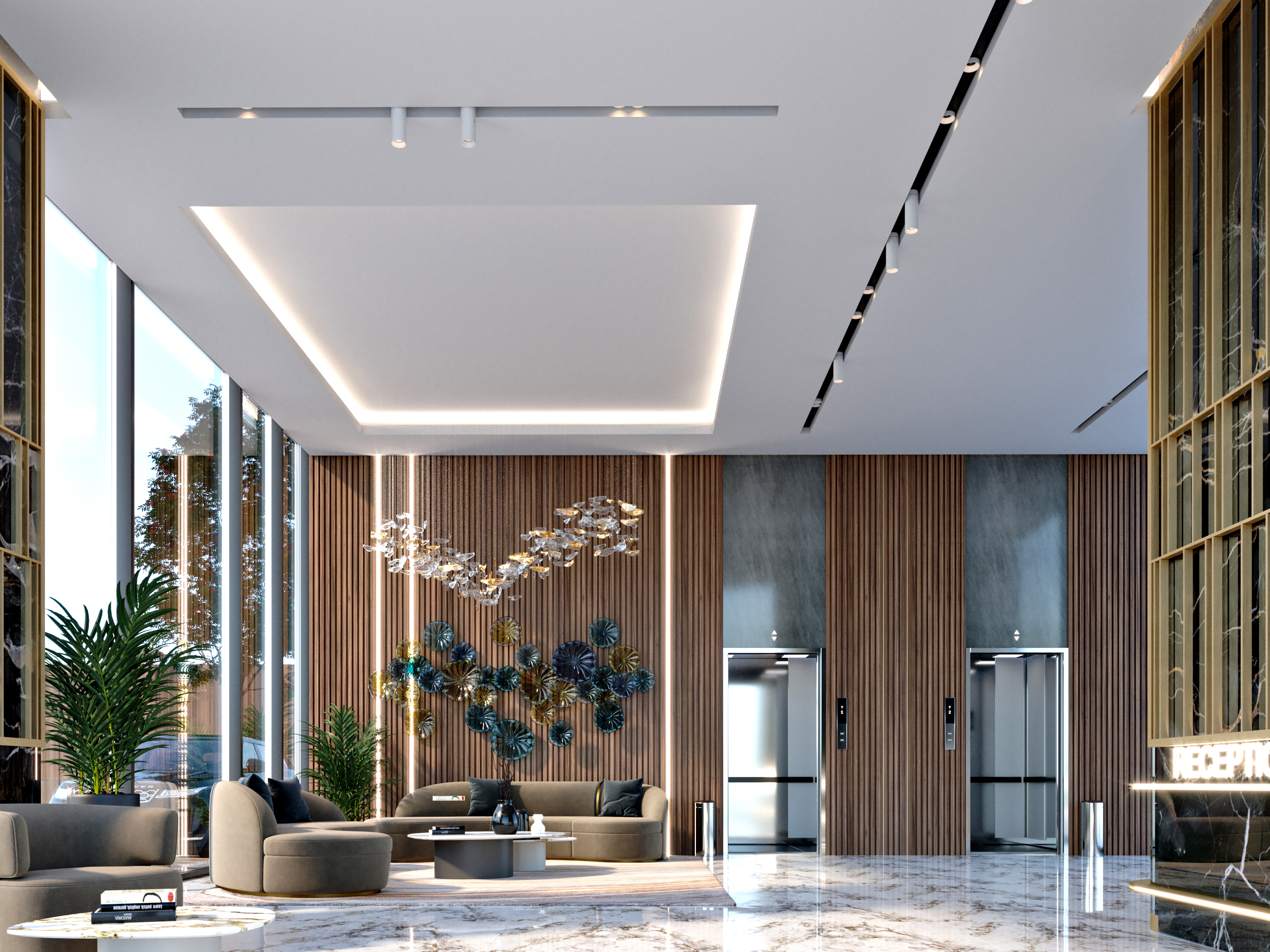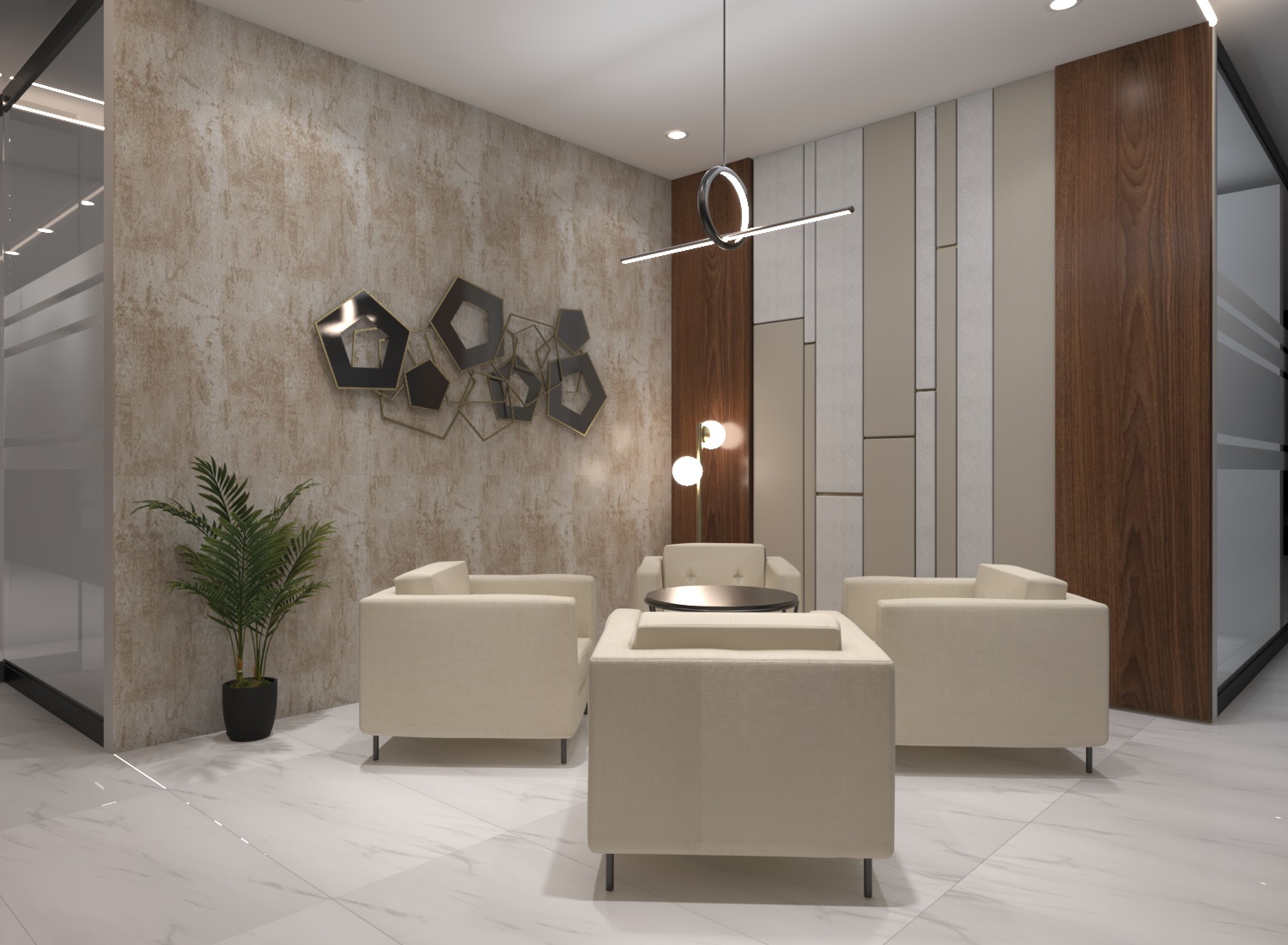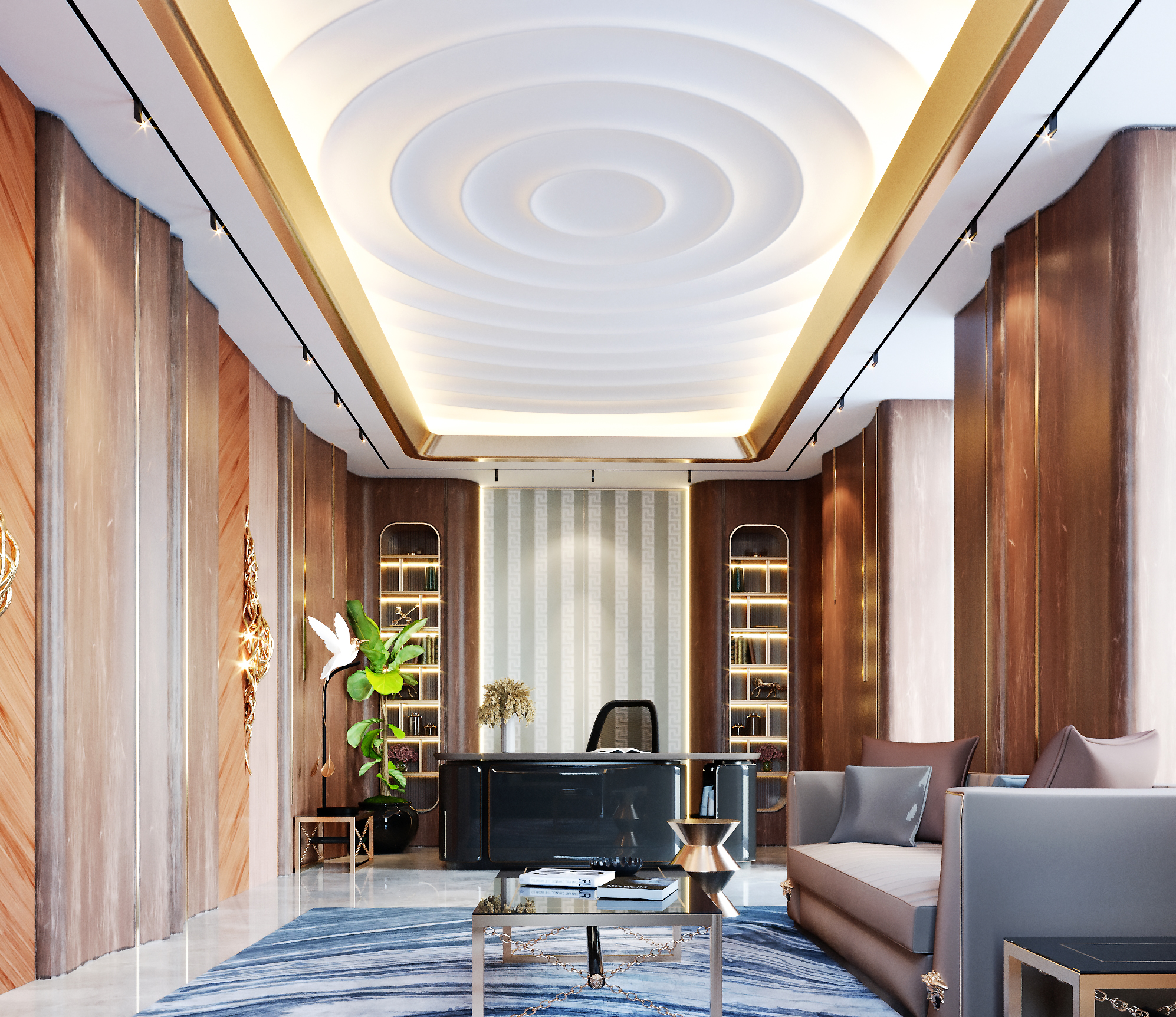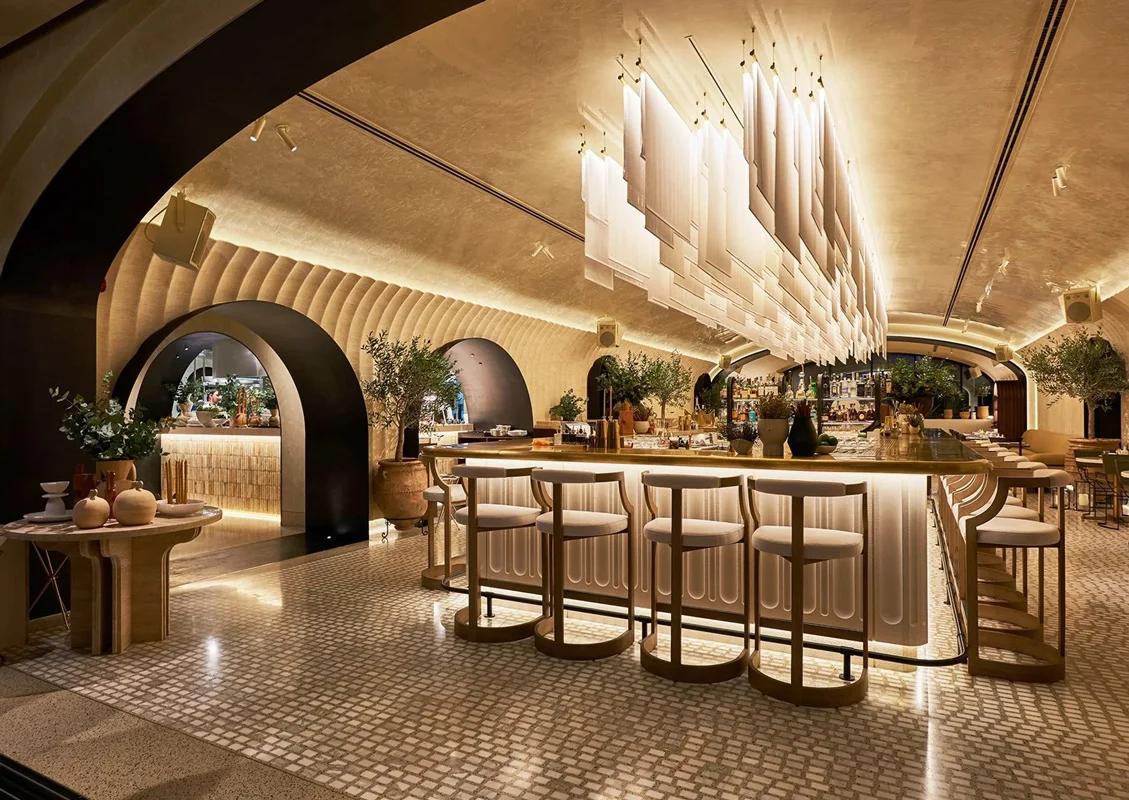“Home is not a place, it’s a feeling.” This quote by Cecelia Ahern applies not just to homes, but to commercial places too. It strongly captures the spirit of why interior spaces matter so much today. A well-designed space enhances the aesthetics, providing comfort and functionality. In addition, it broadly impacts your mood, productivity and overall well-being.
Understanding the difference between both is essential. It will help you make an informed decision before you plan to renovate your interiors. Interior design focuses on aesthetics. Interior fit-out is about making a space fit to live in.
Finding a reliable professional providing interior design and fit-out services is critical. You have to deal with several issues, such as budget constraints, limited time, quality concerns, procuring permits, sustainability, etc. This article encompasses all the answers to these issues. Hopefully, it will help you arrive at an appropriate decision before planning your next renovation.

What is Interior Design?
Interior design is a versatile field that encompasses conceptualising, planning and organising design elements to beautify the interior spaces. The main objective of interior design is to create visually appealing spaces.
Interior design means plotting attractive and functional spaces to meet clients’ personalities and requirements. An ideal interior design blends aesthetics and functionality to enhance user experience.
- Aesthetics: Aesthetics correspond to visual attractiveness and ambiance. It involves selecting appropriate design themes, including hues and other decorative items in conjunction with furniture, lighting, etc. The goal is to enhance the overall appearance of the space.
- Functionality: It involves thoughtful placement of furniture and fixtures, optimal space usage, and considering the flow of movement in the space. It emphasizes making the space workable efficiently for its intended purpose.
- User Experience: User experience is how an interior-designed space makes you feel. It focuses on enhancing the comfortability of a space and making it easy to navigate. An ideally designed space makes you feel positive, promoting the productivity and health of users.
The interior design process involves several stages. It requires researching and analyzing the client’s goals and requirements, conceptual development, design ideas, and executing the design to bring it to life.
The interior design process
1. Strategic planning phase
It is one of the crucial steps in the interior design process. Herewith the steps.
- Site visits: The interior design team inspects the site to understand the space and its setting.
- Understand the client: It’s crucial to understand the client’s lifestyle choices and how they use their space. It helps to create a personal and functional design.
- Research and surveys: The team conducts surveys and thorough research to understand additional information about the client’s requirements.
- Budget and goals: This aspect is crucial to determine how to go forward with the design and other elements that adorn the interiors.
- Space usage: It involves strategic planning for using the overall space, furnishing, fixtures, Heating, Ventilation, Air Conditioning (HVAC), lighting areas, and number of inhabitants.
To summarise, this phase mutually determines the ideas to bring the client’s vision into reality within their budgets and time frame.
2. Conceptual Development Phase
This phase is the second step in the interior design process.
- Confirming Design Direction: It confirms the logical design with utmost clarity. It helps to determine the succeeding design, implementation, and completion stages, strengthening the importance of accuracy, detail, and clear communication.
- Space Modification: It involves making spaces functional to blend them well with the overall theme. The interior designer drafts sketches that lead to space transformation. The interior designer sends these sketches to the client for approval.
3. Design Development Phase
The third step involves the following steps:
- Improving solutions: This step involves collecting more information on items specific to the theme.
- Developing plans: The interior designer develops floor plans, furniture plans, interior elevations, reflected ceiling plans, and other details. He also assembles specifications and plans for furniture, fixtures, and other equipment.
- Interior rendering: The team creates interior renderings and collaborates with Environmental Graphic Designers (EGDs) for branding.
- Collaborate with consultants: The interior design team collaborates with structural engineers, Mechanical, Electrical, and Plumbing (MEP) engineers, and life safety consultants.
- Finer details: This step covers final details, including fixture recommendations, such as finish material for flooring. In addition, the team draws layouts for kitchen cabinets, bathrooms, appliances, and equipment.
4. Construction Documentation Phase
It involves the following steps.
- Creating documents and construction drawings: This step involves creating documents and structural drawings to invite bids from contractors to help them construct the project and obtain any required permits. It aims to collect the final documentation for bidding and the construction stage.
- Establish finer details: This step involves finalizing floor plans, cabinetry, elevations, lighting, window schedules, lighting plans, and design styles. These documents act as a basis for interior fit-out contractors to understand the planning and scope of work to estimate the pricing. In this step, the interior designer selects all required products and materials.
This phase ensures all documentation and materials are ready before construction begins.
5. Construction Management Phase
This phase is the final phase in the interior design process.
- Contractor Management: The interior designer supervises all contractors, including the interior fit-out contractor and ensures that they have maintained quality throughout, according to planned specifications and schedules.
- Completion of Project: It involves checking and verifying the completed work and ensuring safety before the clients move in.

What is Interior Fit-Out?
The interior fit-out work is to make interior spaces suitable and functional for occupation, strictly adhering to the interior design plan. It involves a detailed and tailored approach to creating an interior space. Interior fit-out work applies to commercial, official or retail spaces and residential spaces.
The building contractor completes the basic construction (shell & core space), and the inhabitant executes the interior fit-out work. The interior fit-out scope of work depends on the type of space as follows:
- Shell & Core: A simple primary structure of walls, base plant, cladding, and toilets with no add-ons.
- Cat A Fit-Out: This space may have elevated floors, suspended ceilings, MEP services distribution and internal surface finishes. Occupants can readily start living in this place.
- Cat B Fit-Out: It has fully-featured kitchens and amenities, ceiling design, fixtures, floor finishes, partitioning and staircase installation. Some spaces may even have furniture.
Importance of Construction and Implementation: Interior fit-out work is a technical process that rises above mere decoration. It helps create a space that fulfills the client’s functional requirements and reflects their brand identity and aesthetic preferences. Careful planning, design and execution are crucial to achieve a successful outcome, irrespective of the type of space, i.e. Cat A or Cat B fit-out. A well-executed fit-out work helps to enhance user engagement, productivity and satisfaction.
The interior fit-out process
Let’s understand the interior fit-out process in detail.
1. Authority Approvals
Authority approvals are a crucial part of the interior fit-out process. Obtaining the required construction permits from the respective local authority offices is essential. At this point, the documents mentioned in the ‘construction document phase’ demonstrating the scope, elevations and material schedules play a crucial role.
Additional documents include NOC from the developer and landlord, contract agreement/title deed copy, tenancy agreement copy, fit-out contractor letter of appointment, and contractor documents (acceptance letter, trade license, undertaking letter, etc.)
2. Site Mobilisation
Site mobilization involves work commencement on site. It starts with approval of relevant documents and work permit procurement from the respective departments. At this step, the project manager and engineer collaborate to ensure all execution adheres to the approved submittals, statements, and drawings. They also confirm the availability of all tools and equipment needed for the project. The Health Safety and Environment (HSE) officer oversees the implementation of appropriate safety measures.
3. Demolition Works
The first thing after mobilizing the contractor on-site is the demolition work. It involves razing the existing structure and becomes redundant in the new interior fit-out. It includes existing interior fit-out, joinery, mechanical and electrical works, etc.
Demolition work requires utmost safety and efficiency, adhering to strict safety guidelines.
4. Civil and MEP Works
Civil and MEP (Mechanical, Electrical, and Plumbing) works are two critical components in the whole process.
Civil work provides shape, structure, and aesthetics to the interior space. Activities such as floor installation, ceilings, partitions, furnishings, window and door fittings, heating, plumbing, ventilation, etc., fall under civil work.
MEP work involves bringing in the utilities to facilitate services such as air-conditioning, lighting, water supply and drainage, fire-fighting systems, building management systems, and telephone and internet systems. It’s crucial to execute MEP work flawlessly and efficiently during the early stages of the project.
Overall, the civil and MEP work ensures that the space is functional in addition to aesthetics.
5. Ceiling Design/Closure
After MEP work completion and verified inspection, it’s time to start with false ceiling work. A false ceiling covers the upper side of any room and hides the mechanical, electrical and plumbing (MEP) installations.
False ceilings are a design technique that is not limited to sheer structural elements. They also provide an area to install lighting fixtures, fire and smoke detectors, speakers, and automatic sprinklers. Exposed or suspended ceilings are the most common today.
6. Final Finishes
It involves finishing out of all newly constructed areas. It is crucial to accurately follow the approved design to ensure the aesthetics appear as planned. Activities include lighting installation, flooring work, partitioning, painting, branding, etc.
7. Joinery (H4)
It involves making wooden components for fit-out work. These components may integrate into the planned structure. However, to have a neat look, they can be tailored to serve an aesthetic purpose, like custom-made furniture, doors, stairs, window frames, and skirtings.
8. Fixtures, Furniture & Equipment (H4)
It involves the arrangement of all portable furniture, fixtures and other items. However, they must ensure that they complement the aesthetics of the interior. Commonly known as FF&E, these include chairs, desks, tables, rugs, soft furnishings, works of art, etc.
9. Completion Certificates (H4)
On completion, the interior fit-out company or the client has to obtain a completion inspection and certificate to use the space. The completion certificate mentions that the project adhered to all relevant guidelines and local regulations.

Key Differences Between Interior Design and Interior fit-out (H2)
| Aspect | Interior Design Companies | Interior fit-out Companies |
| Creative Vision | Conceptualize and visualize the overall appearance and ambiance. | Execute the creative vision through construction and installation. |
| Expertise | Aesthetics, color strategy, furniture selection, and harmonious design concepts. | Construction, installation, and finishing work. |
| Space Planning | Optimise room functionality and flow, considering placement of cabinets, fittings, and structural features. | Implement space planning through actual construction and modifications. |
| Mood and Style | Set the tone and style of a space based on client preferences, whether contemporary, minimalist, or classic. | Realize the design mood and style through material and finish choices. |
| Design Documentation | Provide detailed documentation, including floor plans, color schemes, material choices, and 3D representations. | Follow design documentation to ensure accurate execution. |
| Design Execution | Doesn’t engage in construction work; focus on planning and design. | Responsible for bringing the design to reality through physical construction. |
| Material Procurement | Suggest materials and finishes but do not handle procurement. | Procure materials, furniture, and fixtures as per design specifications. |
| Construction and Installation | Not directly involved; focus on conceptual and aesthetic elements. | Manage construction, structural changes, electrical work, plumbing, and HVAC installations. |
| Quality Control | Ensure design integrity through supervision and adjustments during planning. | Oversee the quality of work and ensure it meets industry standards and client expectations through inspections. |
Collaboration between interior designers and fit-out companies (H3)
A strong collaboration between interior designers and fit-out companies results in good results. A healthy balance between interior designers and fit-out companies ensures the same balance between aesthetics and functionality.
Rectangle Interiors encompasses both the services- interior designing and fit-out services. Our principled approach nurtures a setting that brings out the best ideas and solutions that contribute to the entire success of the project.
Choosing the Right Service Providers (H2)
Selecting the right interior design and fit-out company is critical. However, the following key points will help you choose one.
Research and Reputation: List out interior design and fit-out services and evaluate their work by referring to their portfolios. You will get an idea of their design sense and building capability.
You can understand the company’s reputation through online reviews, client testimonials, and case studies.
Expertise and Experience: Select a company with a proven track record and high experience in handling projects that align with yours.
Communication and Collaboration: Check whether the company can interpret your vision, understand your ideas, and suggest valuable insights. Clarity in two-way communication ensures that the company can meet your expectations flawlessly.
Budget Considerations: Ensure having a transparent discussion about the costs and what measures the company applies to keep it under control. Ask for several options from the company on how it can lower the estimate without compromising the quality to a large extent.

Final Words (H2)
Interior design involves conceptualizing the design of space, while interior fit-out involves bringing the concept to reality. Several stakeholders are involved in the entire process to keep the project rolling smoothly and meet all safety measurements. Selecting the correct service provider helps you stay aloof from most of the worries, like preparing drawings and plans, documenting them, and collaborating with legal authorities to procure construction permits. A reputed and experienced company understands your requirements well and produces the desired results effortlessly.
Rectangle Interiors provides both interior design and fit-out services. Being under one roof, the interior design and fit-out services team have developed a mutual understanding. It helps to bring out complex and intricate ideas to reality flawlessly. Both teams are backed by several years of experience, enabling them to provide appropriate solutions for your interior design or fit-out work.
Contact us today to understand how we can solve your renovation and fit-out issues, at a budget you would deny to refuse.
